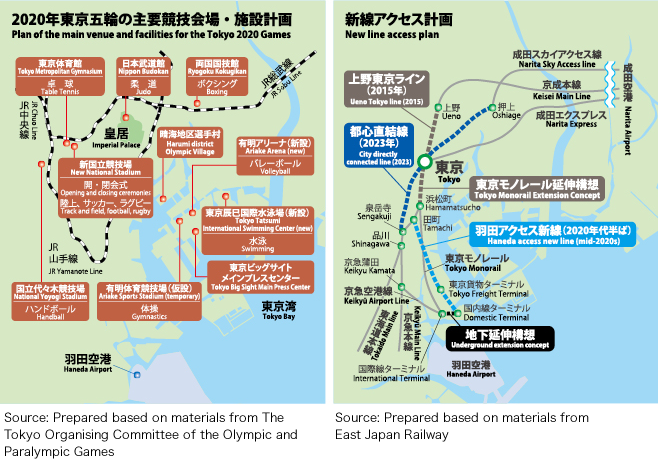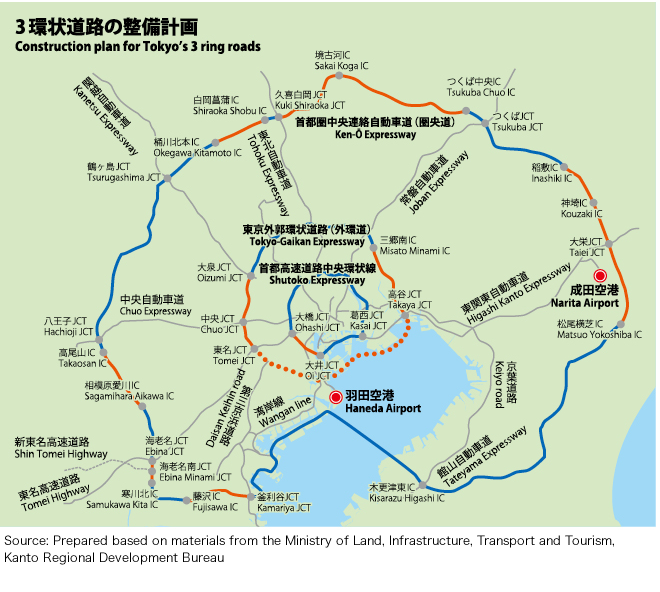Warning: include(/home/c9205967/public_html/kanamoto.ne.jp/include/menu_50annual_en.php): Failed to open stream: No such file or directory in /home/c9205967/public_html/kanamoto.ne.jp/en/pub/50/annualreport/06/index.html on line 93
Warning: include(): Failed opening '/home/c9205967/public_html/kanamoto.ne.jp/include/menu_50annual_en.php' for inclusion (include_path='.:/opt/alt/php82/usr/share/pear:/opt/alt/php82/usr/share/php:/usr/share/pear:/usr/share/php') in /home/c9205967/public_html/kanamoto.ne.jp/en/pub/50/annualreport/06/index.html on line 93
Feature|Sources and Foundation of Growth
Feature| Sources and Foundation of Growth
Construction industry activity remains brisk. The pipeline of major projects includes the Tokyo 2020 Olympic and Paralympic Games (the Tokyo 2020 Games), redevelopment in the Tokyo metropolitan area, the Linear Chuo Shinkansen, and infrastructure upgrades and repairs, and hand in hand with such projects, the demand for construction equipment rentals is climbing rapidly.
To respond to the fullest extent possible to these vigorous needs, which could be called the "source of Kanamoto's growth," the Kanamoto Group is strengthening its sales and marketing capabilities, pursuing technical innovations, and building strategic business systems. The Group is striving to ensure that "organization = foundation," to accurately capture these numerous profit-making opportunities.
The Tokyo 2020 Olympic and Paralympic Games
Waterfront area development to proceed with construction of a new stadium
In the run-up to the Tokyo 2020 Games, plans for the construction of a new stadium and the improvement of existing facilities as well as the refurbishment of roads, railways and other infrastructure are being put into action. One development in particular that is set to be fast-tracked is the so-called Waterfront Area facing Tokyo Bay. As indicated in the figure below, the Ariake and Tatsumi areas (Koto Ward, Tokyo) are candidate sites for construction of the new stadium, while the Olympic Village will be built on city-owned land in the Harumi district (Chuo Ward). The plan is to remodel the Olympic Village after the Tokyo 2020 Games and re-use the buildings as condominiums. Together with the site of the Tsukiji Market, which will be relocated in November 2016, development of the Waterfront Area will continue after the Tokyo 2020 Games as well.
A new National Stadium will be constructed in Shinjuku Ward in Tokyo to serve as the main Tokyo 2020 Games venue. The plan calls for the new stadium to be constructed from October 2015 to March 2019, following demolition of the existing National Stadium.

Construction of transportation infrastructure to be spurred as well
In addition to directly-related building projects such as stadium construction, the Tokyo 2020 Games will also promote upgrade of the surrounding transportation infrastructure network. East Japan Railway announced in June 2014 it will open a new station between the Shinagawa and Tamachi Stations on the Yamanote Line and Keihin-Tohoku Line, to be timed with the opening of the Tokyo 2020 Games.
Similarly, plans to establish a new line linking central Tokyo with the Tokyo International Airport (Haneda) were also clarified in August 2014. Under this plan, a 6km underground tunnel will be dug from the airport to the Tokyo Freight Terminal, and three new routes will be constructed: an East Yamanote Line to Tokyo through Tamachi using the Oshio Line, a currently unused freight line, a West Yamanote Line extending to Shinjuku and a seaside route to Shin-Kiba using the Rinkai Line.
The construction plans for the three ring roads encircling central Tokyo also are attracting attention. One concerns the Tokyo Gaikan Expressway and will seek completion of the route around 2020. The expressway is an 85-km road that connects in a loop extending approximately 15 km from the city center. An extension of the Central Circular Route also is being planned. This plan will extend the route to the Waterfront Area, and directly connect the Toranomon district with Tokyo International Airport (Haneda). The third ring road was 58% complete at the end of April 2013. The government will seek to increase this to 92% by 2020.
